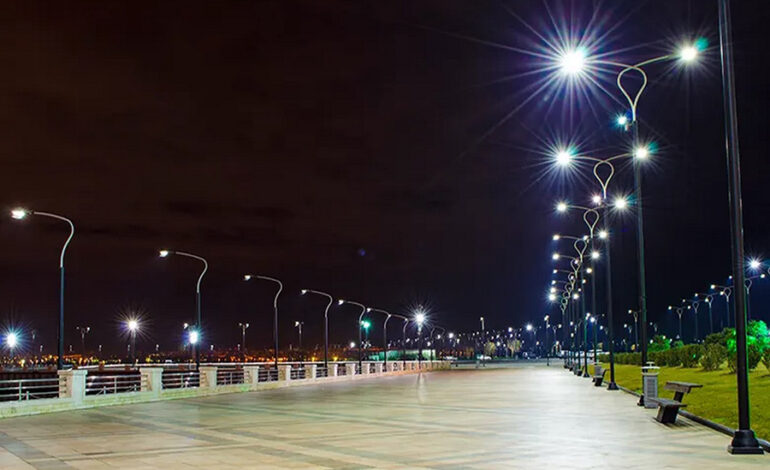Guiding Light: Illuminating Walkways for Safety and Beauty

1. Outdoor Walkways: A Symphony of Safety and Aesthetics
1.1 Prioritizing Safety in Outdoor Design
Illuminating outdoor walkways is not merely a design choice; it’s a safety imperative. The architectural and infrastructural planning of these pathways plays a pivotal role in ensuring the safety and aesthetic appeal of the overall environment. Serving as the first impression of any infrastructure, well-lit walkways contribute significantly to the atmosphere they lead to. This aspect is particularly crucial in urban planning and design, creating pleasant environments for pedestrians.
1.2 Tailoring Brightness to Unique Characteristics
In outdoor lighting design, prioritizing safety involves adjusting the brightness levels based on the unique characteristics of different areas. Sections with potential hazards, such as sharp turns, staircases, or obstacles, demand higher luminance to act as visual warnings. Entrances, crossroads, or paths leading to popular destinations necessitate brighter lighting to enhance visibility. Conversely, areas benefitting from existing ambient lighting can be treated with a balanced approach. In these cases, additional fixtures complement the existing illumination without causing unnecessary glare or discomfort.
2. Outdoor Walkway Lighting Options: A Symphony of Choices
2.1 Bollard Lights: Marrying Form and Function
Bollard lights, with their contemporary aesthetic, have gained popularity for both visual appeal and safety enhancement in outdoor lighting. Their sleek design not only adds visual interest but also contributes to creating a safer environment.
2.2 Downlighting and Uplighting: Crafting Visual Effects
Downlighting, known as moonlighting, directs light downward, adding a subtle touch to walkways. On the other hand, uplighting projects light upward, creating artistic effects by casting shadows around walkways using outdoor elements. These techniques contribute to a visually engaging outdoor ambiance.
2.3 Post Top LEDs: Efficiency Meets Aesthetics
For areas requiring brighter lighting, Post Top LEDs emerge as an efficient option. Offering consistent outdoor lighting with a visually appealing appearance, they find particular effectiveness in parking areas and as campus lighting solutions.
3. Indoor Walkways: Navigating in Style
3.1 Pendant Lighting: Creativity in Corridors
Indoor walkways demand adequate lighting for safety, with pendant lighting providing a creative and open feel. Careful consideration of design and functionality ensures a harmonious blend with the corridor’s structure.
3.2 Wall-mounted Lights and Sconces: A Stylish Touch
Wall-mounted lights or sconces offer a plethora of stylish designs, significantly enhancing the aesthetic appeal of indoor walkways. Ideal for those seeking a maximalist lighting approach, these fixtures bring a touch of sophistication to indoor spaces.
3.3 Recessed Lighting: Minimalism in Illumination
For a minimalist approach, recessed lighting proves to be an excellent choice. These lights, contained within walls, ceilings, or floors, offer subtle uplighting when placed on the floor, contributing to a clean and uncluttered indoor pathway.
3.4 Staircase Lighting: Safety in Every Step
Choosing safe and reliable pathway lighting includes giving due importance to staircase lighting. Recessed wall lighting, LED strips, and LED downlights strategically placed can add drama to staircases, ensuring safety with style.
4. Embracing Innovation: Motion Sensors
4.1 The Rise of Motion Detector Lights
In recent years, motion detector lights have gained popularity for their dual role in outdoor lighting and home security. Positioned at key access points, these lights serve as warnings when someone approaches. Integrating with smart home systems, they offer remote control and monitoring, providing an additional layer of convenience.
4.2 Benefits of Motion Sensor Lights
Beyond security, motion sensor lights offer cost and energy efficiency. Operating only when triggered, they eliminate the need for continuous illumination, saving energy and reducing bulb replacement costs. Additionally, motion sensors provide a hands-free solution, activating lights when necessary, ensuring a well-lit pathway only when needed.
Conclusion: Crafting Harmony Between Aesthetics and Practicality
In conclusion, pathway lighting stands as a transformative element in our surroundings. Meticulous planning and a diverse array of luminaires contribute to achieving a harmonious balance between aesthetics and practicality. The evolution of motion sensors and smart lighting technologies further propels the realm of walkway lighting into a future of growth and advancement.







